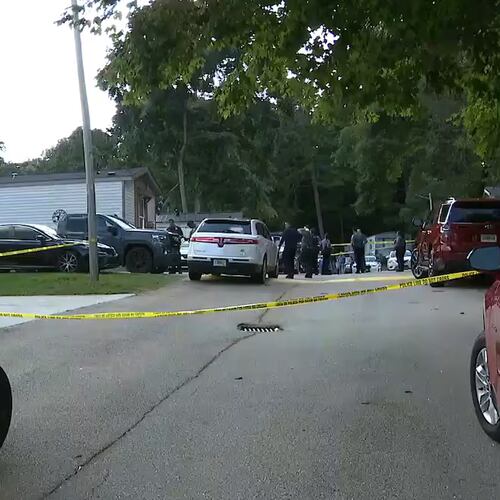Salvage crews have released long-awaited details on the plan to remove the Golden Ray, the capsized South Korean cargo ship near the Port of Brunswick, where it has been sitting on its side since September.
Officials announced in October that the 656-foot vessel which overturned with a cargo of more than 4,000 vehicles would be removed in pieces. To prepare for that, crews, in two weeks, will begin building an environmental protection barrier around the ship to control pollution in the water and capture debris below the water.
“We recognize that the floating boom of the (barrier) alone will probably not be enough to contain surface pollution when we cut into the hull,” Coast Guard Cmdr. Norm Witt, the federal on-scene coordinator for the response, said in a release this week. Crews will be standing by, both inside and outside of the barrier, ready to collect any debris, he said.
>> READ MORE: Plan to cut up capsized cargo ship has roots in previous disasters
Once removal begins, workers will use a floating crane to cut through the hull of the ship with a large diamond-cutting chain. The plan currently calls for seven cuts to create eight sections each weighing up to 4,100 tons. The sections will be lifted onto a barge and transported to an off-site facility to be disassembled and recycled.
“Each individual large-section cut will take approximately 24 hours, and once a cut begins, must continue until that cut is complete,” said John Maddox, Georgia Department of Natural Resource state on scene coordinator in a statement. “We do not yet know when the cutting will begin, but we will make announcements for cutting operations once they are scheduled.”
The plans are similar to past efforts that involved cutting sunken or disabled ships into pieces before removing them from the water.
The ship is cut from underneath while the top of the wreck is fitted with brackets to help stabilize each piece as it is lifted onto the barge. Each section will be wrapped in thick netting before cutting to help contain any debris, officials said.
Recovery operations, which are overseen by the St. Simons Sound Incident Response comprised of the Coast Guard as the federal on scene coordinator, the Georgia Department of Natural Resource (DNR) as the state on scene coordinator, and Gallagher Marine Services as the incident commander for the responsible party, are likely to continue throughout the year with a predicted completion at the end of 2020.
Officials are not providing cost estimates at this time, said a spokesperson for the team.
The Golden Ray overturned Sept. 8. Rescuers drilled into the hull and rescued four crewmen trapped in the ship. In preparation for the ship's removal, workers pumped more than 320,000 gallons of fuel from the vessel, steam cleaned fuel residue and removed the propeller and rudder to help stabilize the ship. About 6,000 tons of rock were also placed along the hull to help with stabilization.
About the Author
Keep Reading
The Latest
Featured




